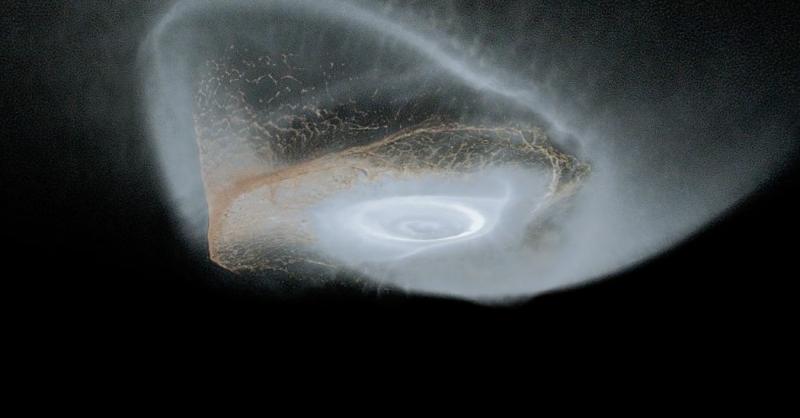
The apparent geological youth of Saturn’s rings has been an open question for the last few decades. Broadly, two models have been suggested: i) the rings are primordial and their masses are comparable to the mass of Mimas; and ii) the Saturnian rings are young.
The hypothesis of a recent origin of the rings of Saturn is currently being thoroughly researched. Central to this discussion are the collisions between mid-sized objects (M~10^19 - 10^21 kg) resulting from the destabilisation of a previous mid-sized moon system which could potentially provide a pathway to the formation of rings and re-accreted moons ~100 Myr ago.
We perform a suite of hydrodynamical simulations which model a Dione- and Rhea-like icy moons to demonstrate the aforementioned hypothesis. This suite spans the parameter space defined by 1) impact angle; 2) velocity at infinity; 3) number of particles within the simulation box. In this abstract we will present the collisional outcomes of our search for icy debris disk (i.e. rings) within the Roche limit of the planet. In total ~140 independent simulation volumes were performed, producing 18 TB of data.
To summarise, for head-on to mid-angle impacts, a significant amount of ice and rock material is ejected from both bodies. The ice is mostly dispersed into relatively diffuse debris, while the rock remains, or more rapidly re-accretes into a large number of cohesive fragments. Material is sent far throughout the Saturnian system. It is likely that a precursor satellite system would have a broadly similar mass and architecture to the present one – perhaps with a somewhat larger total mass – whether it formed from a gaseous circum-planetary disk or primordial rings. Large amounts of impact debris and fragments are placed onto orbits that would intersect with other satellites around the locations of those in the present-day system, as well as deep into the Roche limit.
In this work we used the open-source hydrodynamics and gravity code SWIFT (SPHWith Inter-dependent Fine-grained Tasking). SWIFT was designed from scratch to run fast simulations and scales well on shared/distributed-memory architectures. Finally, we introduced a new object finder algorithm devised to depict gravitationally bound objects in phase space.
